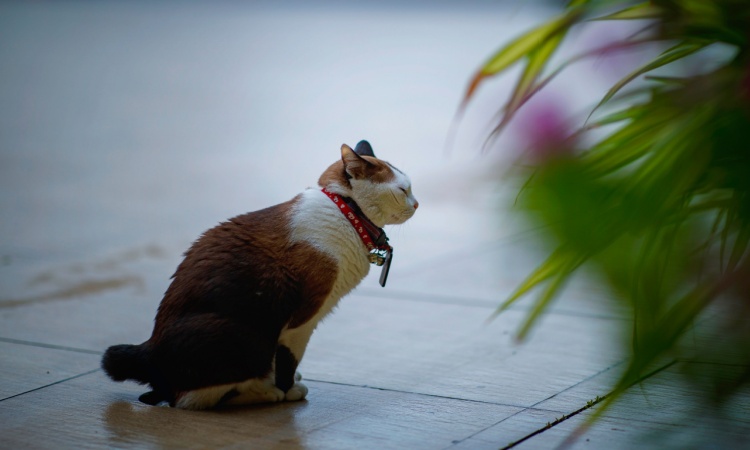Cat Drinking Too Much Water? Causes, Diagnosis & When to See the Vet
Cat Drinking Too Much Water? Causes, Diagnosis & When to See the Vet

If your furball suddenly acts like a camel, lapping up bowl after bowl of water, it might be more than quirky behavior. Increased drinking, aka polydipsia, is often the first red flag for bigger health issues. Here’s the full scoop, served with a side of wit and zero stress (except for your cat, obviously).
1. First Things First: What’s Normal?
An average adult cat drinks between 45–90 ml/kg of body weight daily. If your kitty is polishing off more than 500 ml for a 5 kg cat), that’s classic polydipsia .
But before assuming worst-case, check these simple causes:
2. Could It Just Be Diet?
Dry food has only 6–10% moisture compared to canned’s 75–80%. A switch to primarily kibble may increase thirst naturally. Also, hot weather may make your cat drink more. If it’s a sudden ramp-up without other symptoms, a diet shift could be behind it.
3. Kidney Disease
In older cats, chronic kidney disease (CKD) is a top cause of excessive drinking and urination . As nephrons wear out, kidneys filter less water, making cats drink more to compensate.
Watch for extra signs like lethargy, poor appetite, weight loss, vomiting or changes in urine habits . Early detection means better prognosis, cats in stage 1 or 2 can live years with proper care .
4. Diabetes Mellitus: Sweet and Sticky Thirst
If your cat drinks in excess and shows signs of increased hunger, weight loss, or muscle wasting, diabetes mellitus could be at play. This condition causes high sugar levels in the blood, leading to more urine production and more drinking .
Unlike dogs, feline diabetes is mostly Type II and often linked to obesity. Treatment can involve insulin and a switch to a high-protein, low-carb diet.
5. Hyperthyroidism & Liver Disease
Senior cats often develop hyperthyroidism or liver issues, both causing elevated thirst. Hyperthyroid kitties may become ravenous, lose weight, and even show heart problems. Liver disease often brings lethargy and appetite loss despite high water intake .
6. Infections, Electrolyte Imbalance, Medications & More
Other less-talked-about reasons include urinary tract infections (UTIs), pyometra (uterine infection), high calcium levels, Cushing’s or Addison’s disease, and side effects of medications like steroids .
7. Behavioral Causes Are Rare, but Possible
Primary or psychogenic polydipsia is when a cat drinks too much just because, and not due to illness. It’s rare and diagnosed after all medical causes are ruled out.
8. How Vets Figure It Out
8.1 Measurement
Start at home: measure how much water you offer versus what’s left after 24 hours ().
8.2 Exam & Testing
Vets will do a full physical exam, ask about eating, peeing habits, medications, diet, and behavior. Blood tests (CBC, kidney/liver panels, glucose, thyroid hormone) and urinalysis help identify diabetes, kidney or thyroid issues.
8.3 Advanced Diagnostics
If needed, vets may do ultrasound, X-rays, or advanced hormone testing. Specific diagnosis leads to targeted treatment.
9. Treatment Plans: From Diet to Meds
• Kidney disease:
managed with low-protein/phosphorus diet, hydration support, blood pressure meds, supplements. Early stages respond best.
• Diabetes:
daily insulin, diet changes, and glucose monitoring, some cats even achieve remission.
• Hyperthyroidism:
treated with methimazole, surgery, radioactive iodine, or special diet .
• Infections or metabolic issues:
antibiotics, hormone therapies, or symptom-specific treatments.
• Behavioral:
least common, needs lots of vet detective work and elimination of physical causes.
10. When to Call the Vet
Fast action is key if you notice:
• Drinking over 100 ml/kg/day or sudden spikes
• Changes in litter box habits (more or less urine)
• Weight loss, poor appetite, vomiting, diarrhea
• Lethargy, disorientation, or unusual behavior
• Signs of pain (arched back, poor posture)
• Senior cats exhibiting these changes
Delaying a vet visit could let treatable conditions turn serious, early intervention improves outcomes. Tests and treatments for kidney disease, diabetes, or thyroid issues add up fast. Pet insurance can ease financial stress, letting you make decisions based on your cat’s health, not your budget. It gives you coverage for diagnostics, medical care, and hospital care.
11. What You Can Do at Home
• Measure water intake
• Provide fresh, clean water daily-consider a pet fountain for curious cats
• Feed wet food to boost hydration
• Keep the litter box clean so you notice urination changes
• Track eating, weight, behavior, and peeing patterns
• Keep your vet informed of dietary or medication changes
Final Word
Your cat’s sudden thirst isn’t just quirky, it’s often their body signaling deeper issues. By tuning into their habits, measuring water intake, and acting fast when something’s off, you’re giving them the best care possible. And with research-backed treatments, early detection really pays off.
So next time your cat’s chin is buried in their bowl, ask yourself: is it just hunger or hydration or a silent disease? Either way, you’re cat parent of the year for caring this much.
Stay curious, stay attentive, and here’s to many more cozy, healthy days ahead.
Disclaimer: The above information is for illustrative purposes only. For more details, please refer to the policy wordings and prospectus before concluding the sales.
RELATED ARTICLES
How AI is Helping Us Understand What Our Pets Are Saying
How to Train Your Cat Using Positive Reinforcement Techniques
Understanding Seasonal Changes in a Cat’s Behavior










 Health Insurance
Health Insurance  Travel Insurance
Travel Insurance  Car Insurance
Car Insurance  Cyber Insurance
Cyber Insurance  Critical Illness Insurance
Critical Illness Insurance
 Pet Insurance
Pet Insurance
 Bike/Two Wheeler Insurance
Bike/Two Wheeler Insurance  Home Insurance
Home Insurance  Third Party Vehicle Ins.
Third Party Vehicle Ins.  Tractor Insurance
Tractor Insurance  Goods Carrying Vehicle Ins.
Goods Carrying Vehicle Ins.  Passenger Carrying Vehicle Ins.
Passenger Carrying Vehicle Ins.  Compulsory Personal Accident Insurance
Compulsory Personal Accident Insurance  Travel Insurance
Travel Insurance  Rural
Rural 











